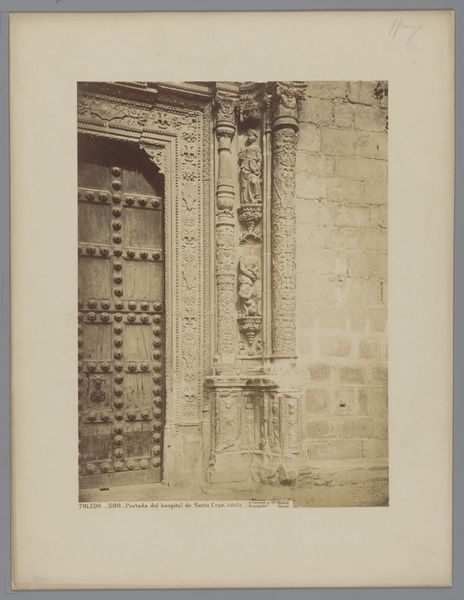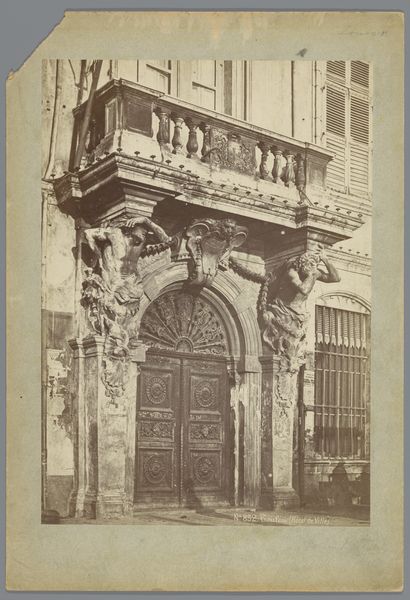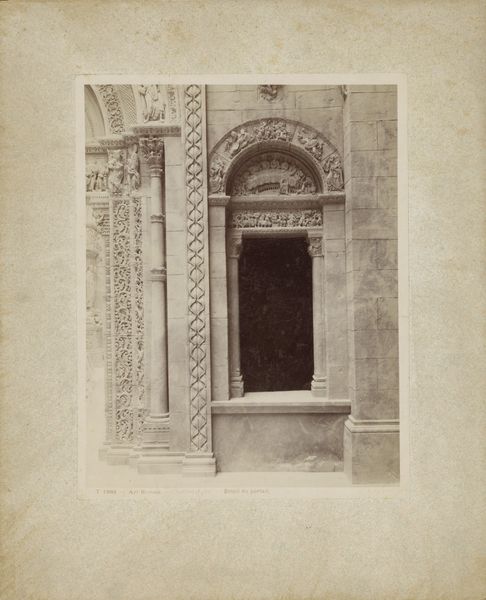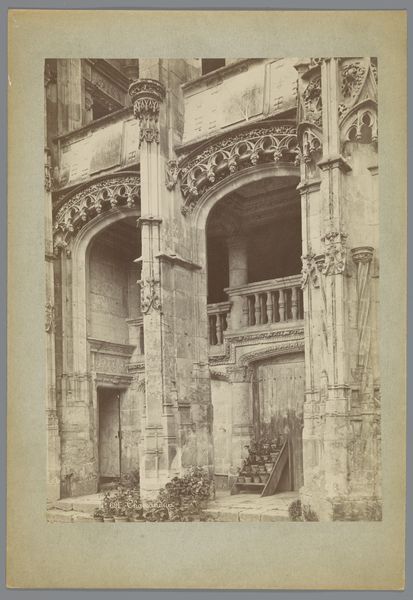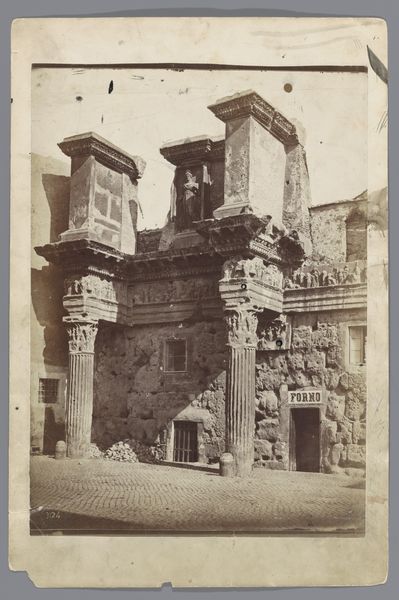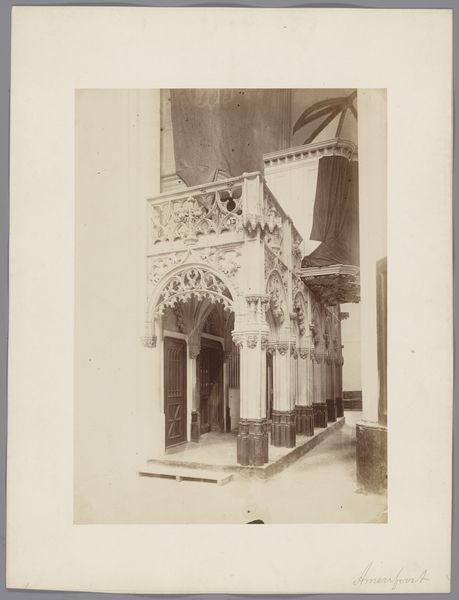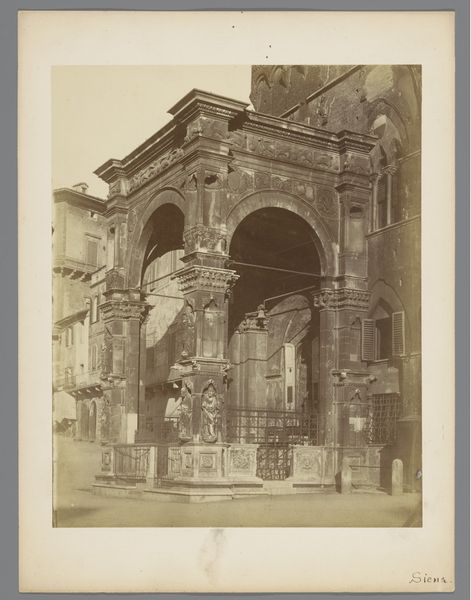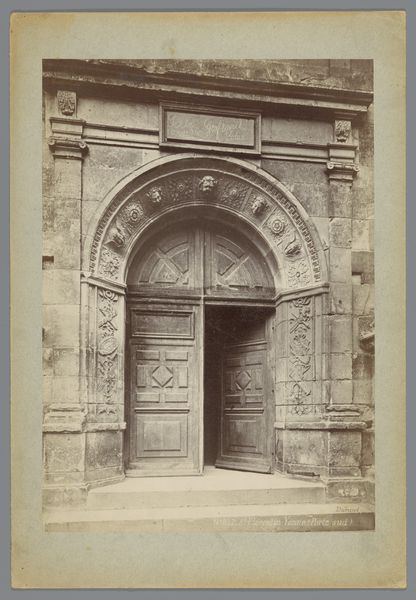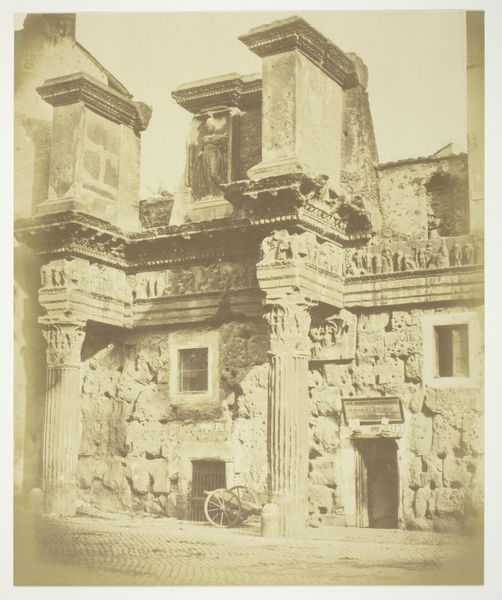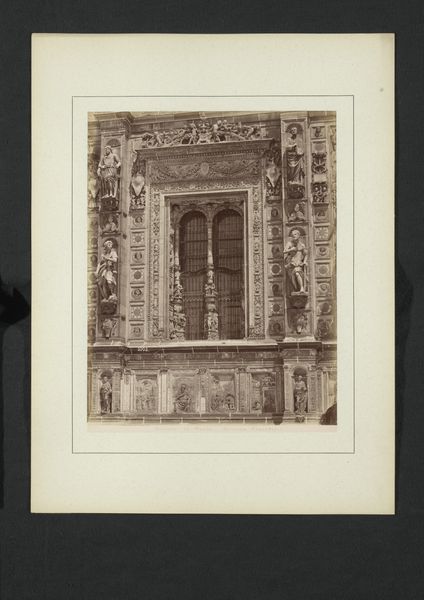
print, photography, albumen-print, architecture
# print
#
landscape
#
photography
#
classicism
#
cityscape
#
albumen-print
#
architecture
Dimensions: height 320 mm, width 230 mm
Copyright: Rijks Museum: Open Domain
Editor: This is "Boog van de geldwisselaars te Rome" or "Arch of the Money Changers in Rome" by Gustave Eugène Chauffourier, made before 1869. It appears to be an albumen print, a photograph capturing an architectural scene. What immediately strikes me is the sheer detail achieved in this early photographic print. What catches your eye? Curator: The composition intrigues me. Notice how the photographer has positioned the arch, not straight-on, but at a slight angle, which creates depth and emphasizes the ornamentation. Consider the surface texture—the way the light plays across the carved details of the archway. Does this not call attention to the interplay of light and shadow and how it animates the stone itself? Editor: It definitely does. The shadows really accentuate the carved figures and decorative elements. It's almost sculptural. What about the human figure at the base? Is that significant? Curator: It provides a scale, yes, but also functions as a visual anchor. His presence grounds the monument and offers a human dimension. If the figure were missing, the print's sense of space would flatten, wouldn't it? How do you feel about the architectural space created through the work? Editor: It is powerful to see, through a black-and-white print, the extent of ornate details in a public structure and the classical themes presented in sculpture. Also the relation of time periods – where you see the structure as part of a lived in space. Curator: Precisely. The intersection of architectural form and photographic process creates something quite remarkable. Photography turns architecture into more than just building. Editor: I’ve gained a new appreciation for how even early photography uses composition to emphasize specific details. Thank you! Curator: My pleasure. It's through this careful observation of form and materiality that we come to truly appreciate such works.
Comments
No comments
Be the first to comment and join the conversation on the ultimate creative platform.
